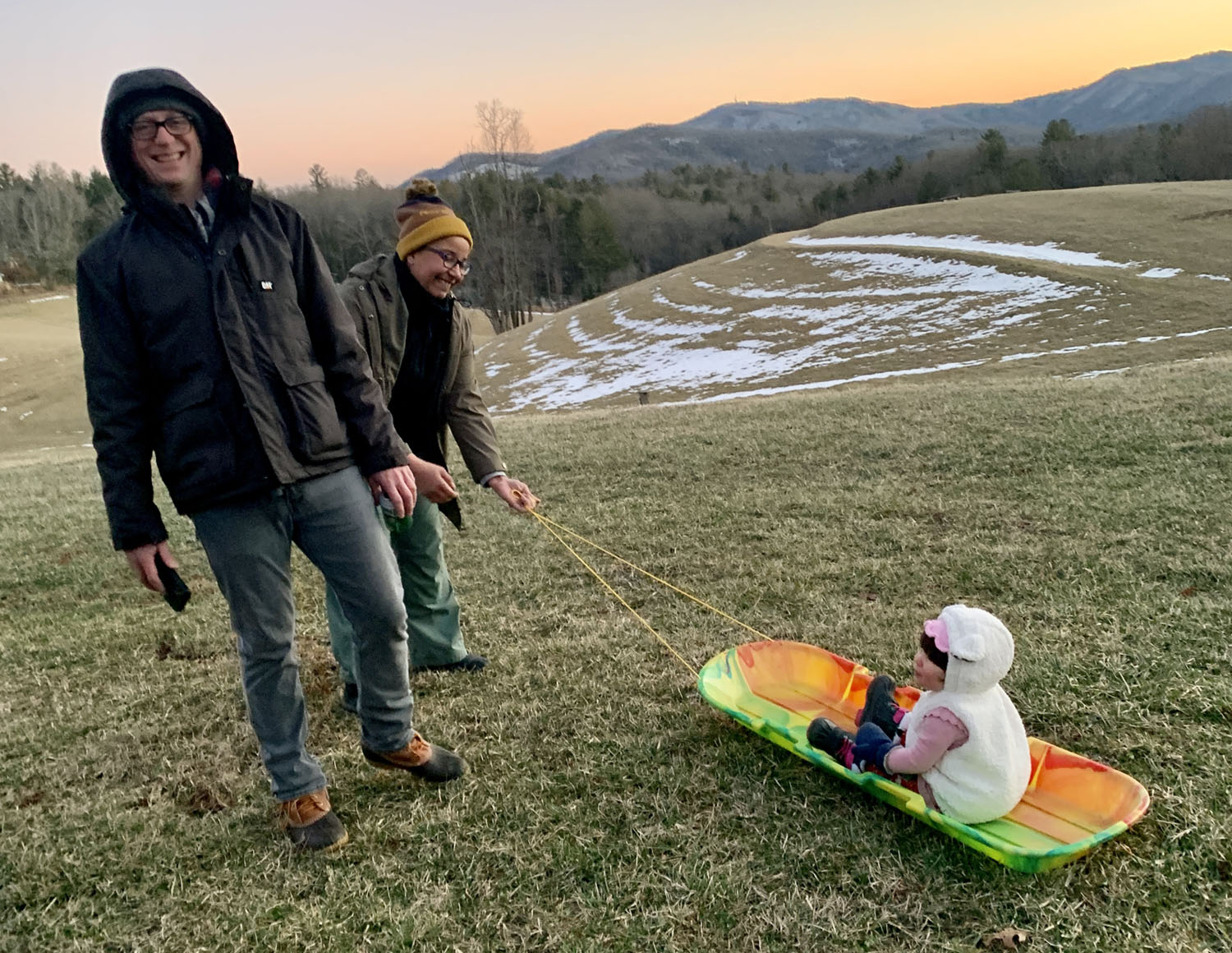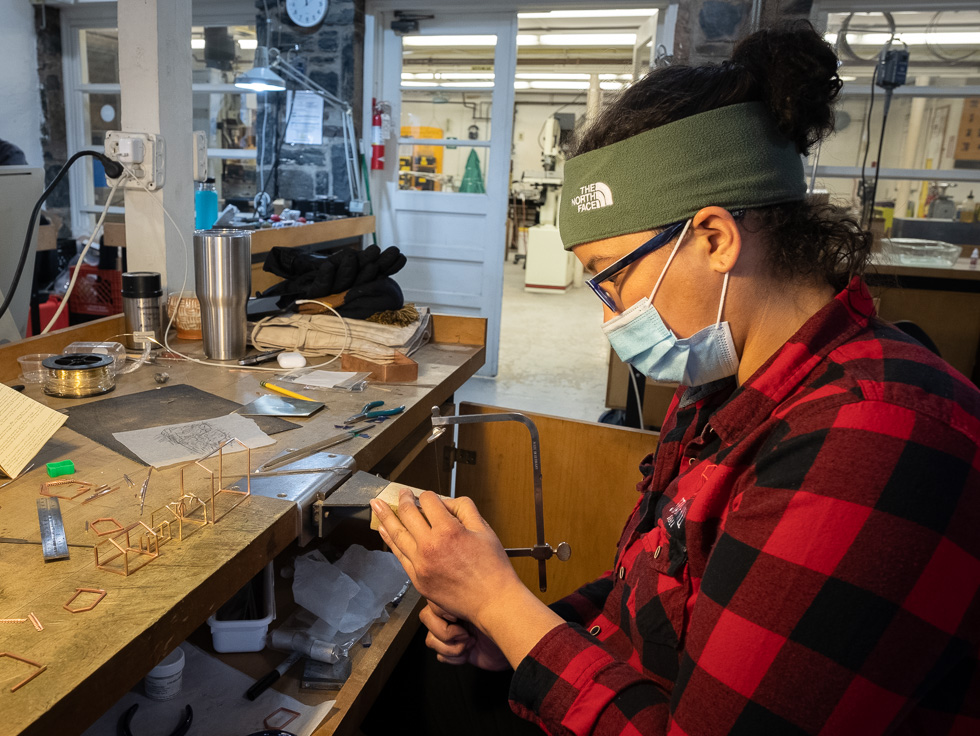
Nancy Sanderson did not have the typical reaction to the souvenir shop at Mount Vernon. Nancy is African American, and she was visiting the home of President George Washington with her husband’s family. She had been thinking about souvenirs because the metals class she was taking at Virginia Commonwealth University had given her an assignment to create a souvenir. (That class was taught by Adam Atkinson, who is currently a Penland resident artist.)
She had been thinking about the people who were enslaved at Mount Vernon and how some of them were the laborers who built the place. “And then I just thought, it’s crazy that there is a souvenir shop here,” she remembers. “To me, and I know this is a big jump, it was like if there was a souvenir shop at Auschwitz or Guantanamo Bay or some other place where people have suffered, and people are like, hey, let’s grab a shot glass or a needlepoint. I do understand that the institutions have to have income if they are going to preserve these places, but I would like to see it done in a more respectful way.”
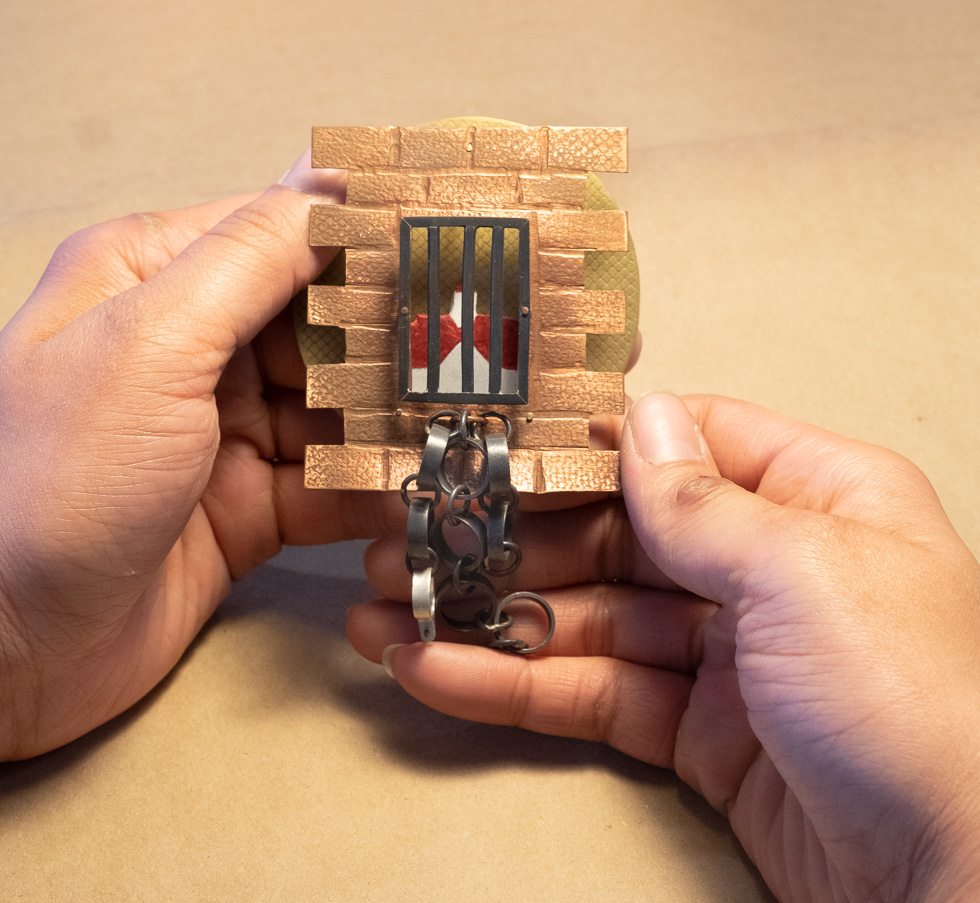
A previous metals assignment already had her thinking about architectural elements as jewelry components, and so she responded to the souvenir assignment with her brooch called “Souvenir for the Enslaved by George Washington at Mount Vernon.” The piece includes a small profile of George Washington’s house made from painted wood. This is seen through a barred window in a brick wall made of copper. Chains, ending in a shackle, hang from the wall. The shackle, she explains, is silver, because that’s the part that would have touched the body.
Making this piece caused Nancy to imagine a series of jewelry works inspired by the estates of other slaveholding American presidents. Her studio access is limited currently as she is on hiatus from VCU, caring for her newborn daughter and navigating the pandemic with her family. But she was able to participate in Penland’s winter residency, giving her the opportunity to start work on the second piece.
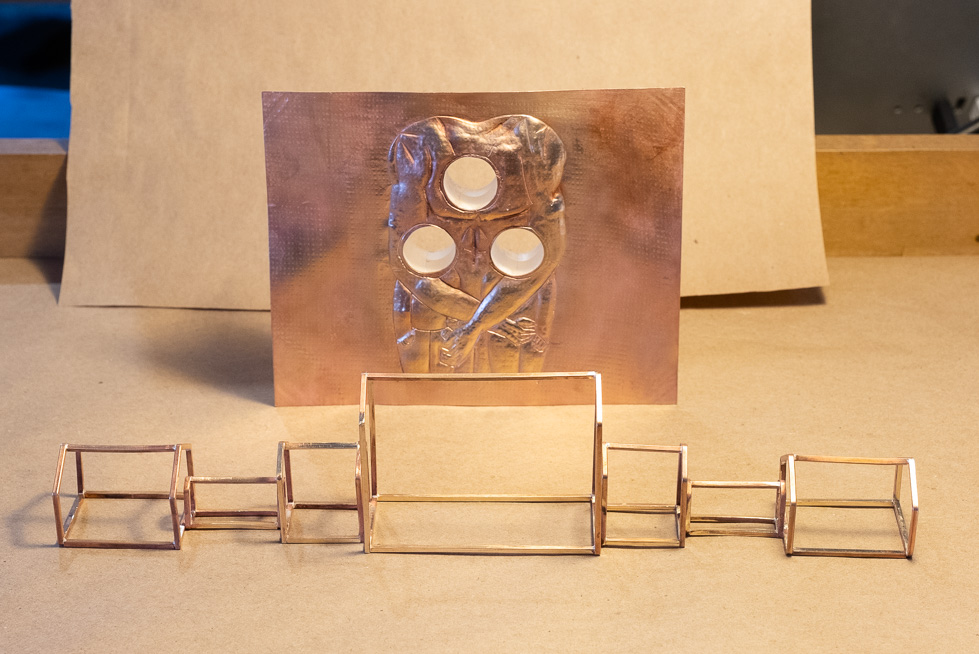
More ambitious in scale and complexity than the first, this piece will be the “Souvenir for the Enslaved by John Tyler at Sherwood Forest Plantation.” The John Tyler house is a 301-foot-long structure that is essentially seven buildings attached end-to-end and is claimed to be the longest frame house in America. Nancy’s piece will be a three-finger ring with a simple model of the whole house sitting on top of it.
The ring itself will be a hollow form that contains a relief image of an enslaved man with arms crossed and head bowed. Two children stand in front of him. “It’s a play on Atlas,” she explains, “and the house will rest on his back. There are children in the image because it’s not just about the enslaved, it’s also about that legacy and how it goes to the next generation and the next generation.”
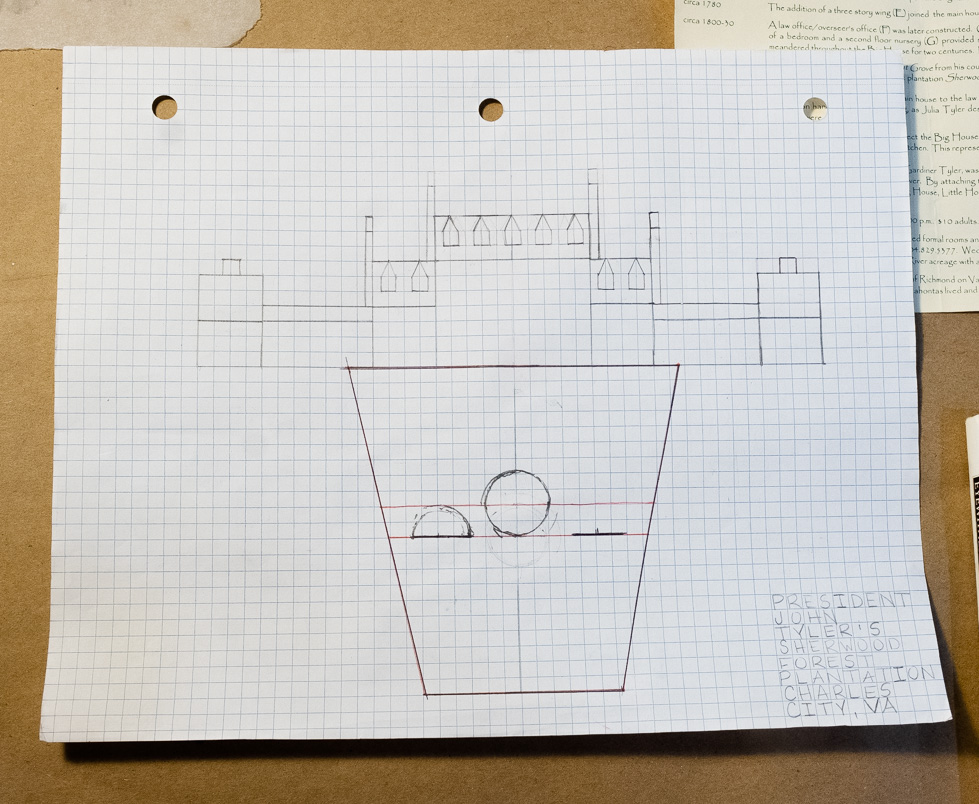
“It’s truly heartbreaking,” she continues, “to imagine that you’d probably be proud of what you contributed to that house and that plantation, but then to not be allowed to be proud and to not have any type of ownership of your contribution. To live your whole life and to know that no matter how hard you work, you will never have this. It’s not allowed. That’s what I’m thinking about in making this.”
Nancy is rendering these ideas as jewelry because, she explains, “I want them to be wearable and not just sculptures because I want people to touch them and interact, and that’s how they bring you in.” She hopes to complete five pieces in the series; she already has a vision for a piece based on James Monroe’s Highlands. “I think that enslaved people are just overlooked in their contributions to architecture and building,” she says. “So I want to highlight the architecture that enslaved people helped create and combine this with what I enjoy doing with metals.”
